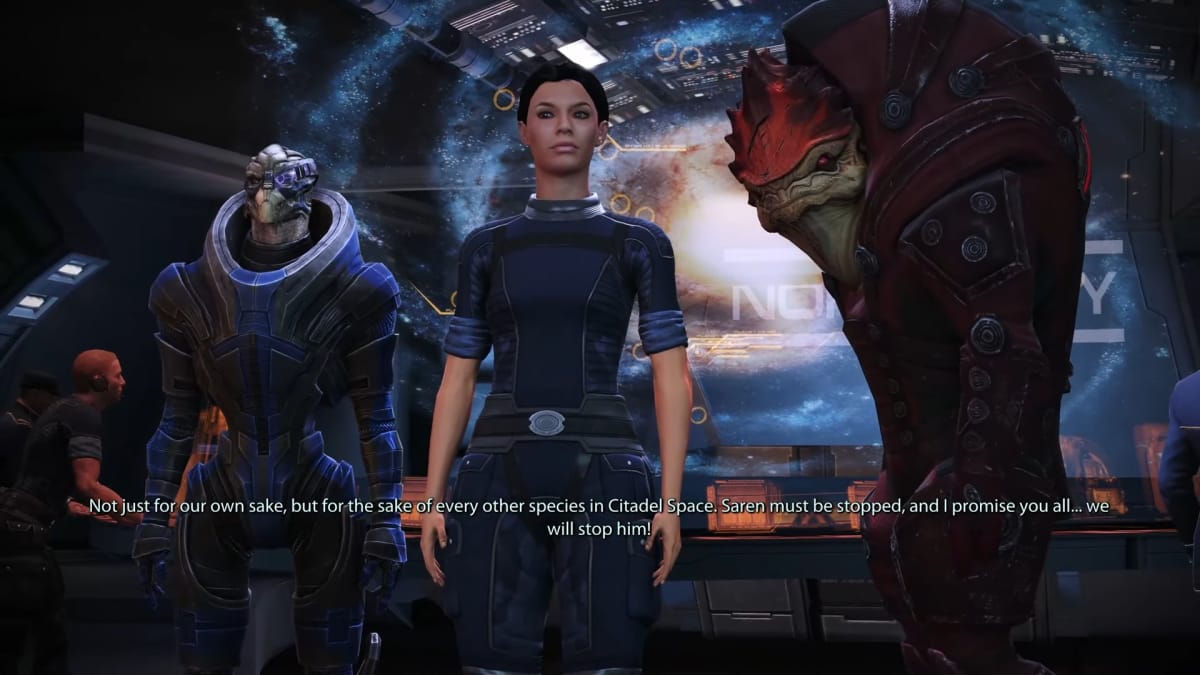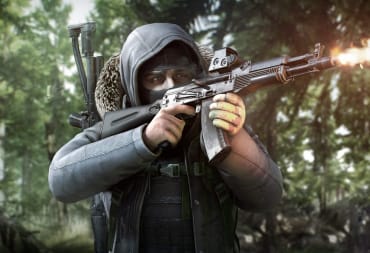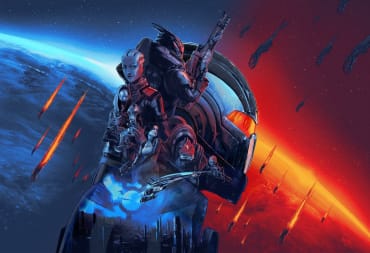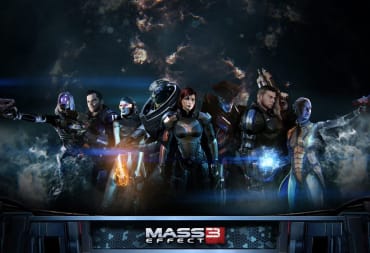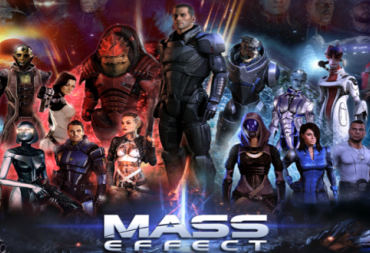The Legendary Edition of Mass Effect has been quite the success, with old and new players alike returning to the franchise and falling in love with its colorful cast of characters once more. A lot of hype was made with the graphical and control updates to the games—most notably the first Mass Effect—but it is far from the only changes made. One particular interest involves a change to Tali, one of your squadmates and potential romantic partners.
At the end of Mass Effect 3, Tali shares a photo of herself unmasked to the player if they are dating. The original release actually caused some controversy (though let’s be fair, what else is new with Mass Effect 3) over the photo used by BioWare at the time: a stock photo of a model with some graphical alterations. The Legendary Edition corrects this by showing a new photo, one of Tali unmasked to showcase slightly more alien features.
It is a unique moment where an alteration doesn’t seem like it is necessary, but is welcome because of the nature of the photograph. It also highlights something about Mass Effect that is both good and conventional about its overall design philosophy: the aliens you meet in the Milky Way and how they interact with the player.
Rubber Foreheads and Cliched Cultures
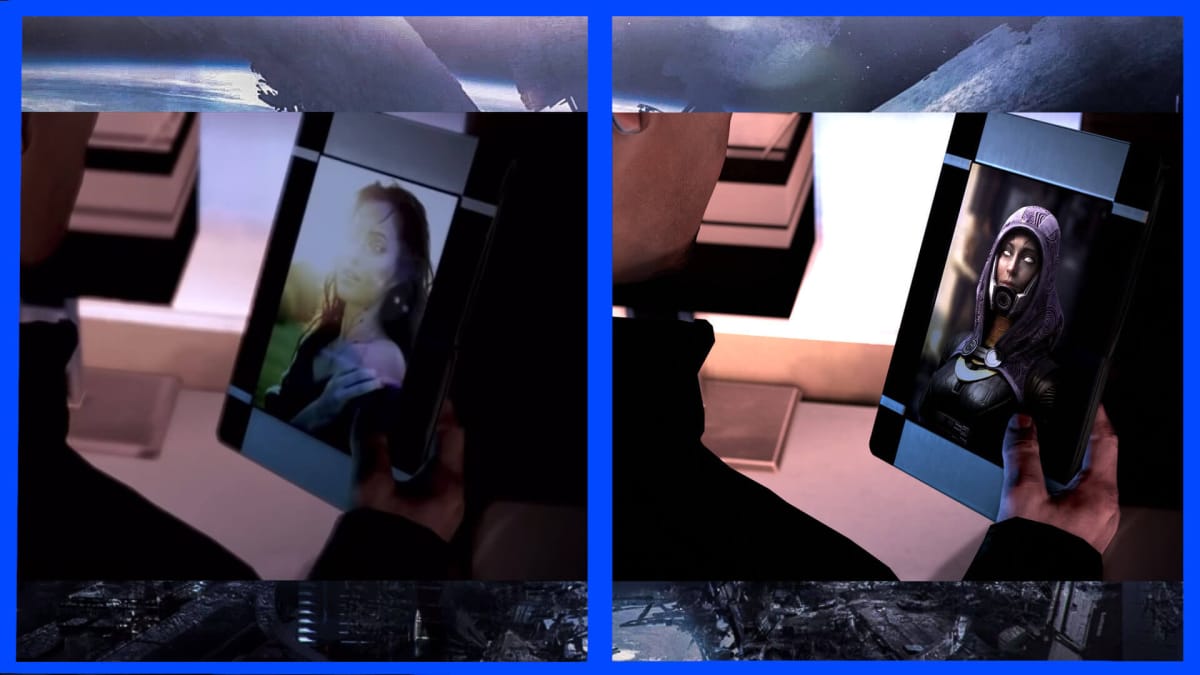
Designing aliens is always a difficult process because, in truth, there are restrictions to it that designers need to grapple with. Do they make the aliens extraordinary and foreign to an extent that their physiology is unrecognizable? For the most part, we often see a trend with alien designs: humanoids of some kind with a few unique traits or appendages attached to them.
This is often nicknamed Rubber Forehead Aliens, a term that is relegated to performers on sci-fi shows like Star Trek. Mass Effect is a good example of this basic principle. as the alien designs are basically following the rubber forehead formula. All of the baseline, mainstream races are bipedal, vaguely humanoid, and in the case of the Asari and Drell, made to look visually appealing to players on purpose.
Alien design is more than just physiology and appearance, it is also the culture and psychology of that culture. Aliens in sci-fi are often portrayed in myriad ways that reflect aspects of human culture, but also lead a sort of monolithic approach to this as a whole. Everyone can name the cultural and psychological traits of a Vulcan with ease because the embodiment of what Vulcans do and are has been well established and near-universal across their race.
This has been a long-standing trait found in most fantasy fiction, not just sci-fi. It is the “orcs are savage barbaric villains” argument but now taking alien biology, psychology, and society into a unique system to make these races more distinct and reflective of human ideals. Mass Effect is, of course, not immune to this either. At least, on the surface.
Have you ever noticed, for example, how the Asari are basically similar in design to the Delvians from Farscape?
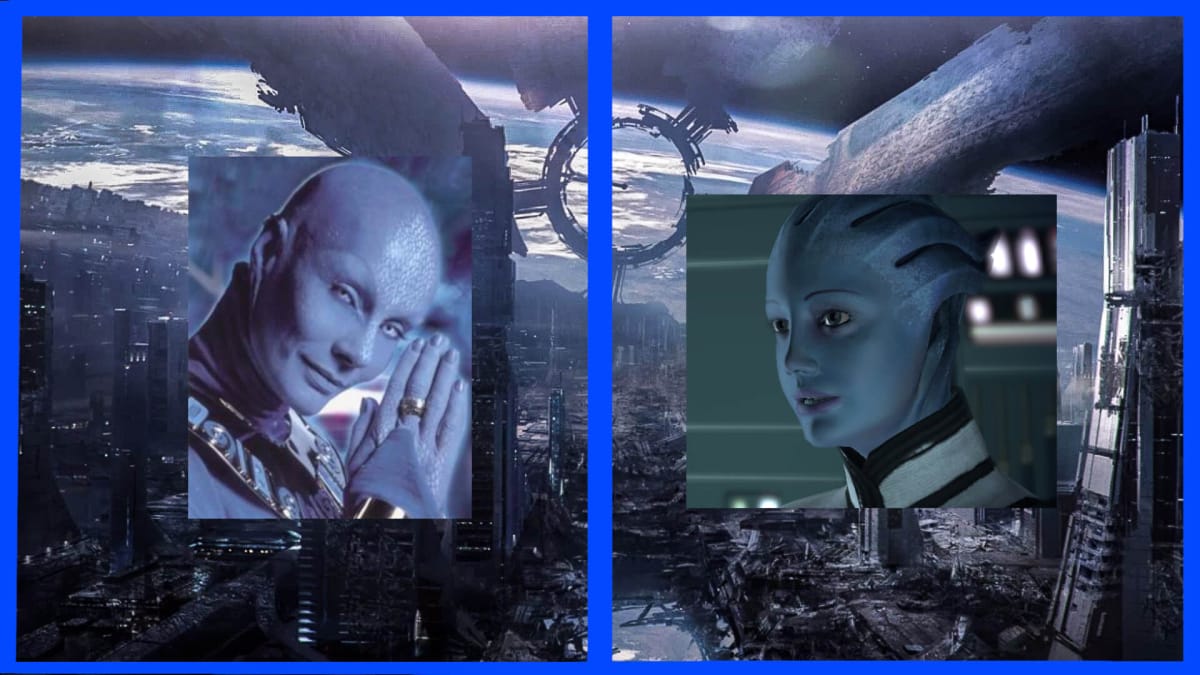
The Delvians, most notably the priestess Zhaan, are a humanoid species of plants who are blue-skinned and often hairless. The Delvians also have considerable psychic abilities due to their structured religious culture, have incredibly long lifespans, and, when in self-defense and starving, secrete toxic pollen that allows them to paralyze and consume their victims.
A lot of those bullet points on the Delvian’s can be said about the Asari. They are a blue-skinned race of near hairless aliens who have incredibly long lifespans, a structured culture, and natural biotic abilities. There are even those afflicted with a genetic condition called Ardat-Yakshi, which causes Asari to prey on individuals and consume their minds.
The Asari are probably the most egregious example of this, but a lot of the aliens in Mass Effect are a laundry list of traits inspired by, or directly lifted from, other alien beings and known animals and sources.
In broad strokes, we see this play out into cultural archetypes that often pigeonhole races in most fictional products. The Krogan being a warrior-like culture is a direct riff on the Luxans and Klingons, while the shrewd merchants of the Volus are analogous to the Ferengi. Salarians are stereotyped as fast-talking technology lovers and scientists; Asari are seen as wise sages and Turians as cops and peacekeepers. Every trope is pretty much-borrowed whole-hog into influencing the designs and personalities of the aliens in Mass Effect.
Playing with Expectations
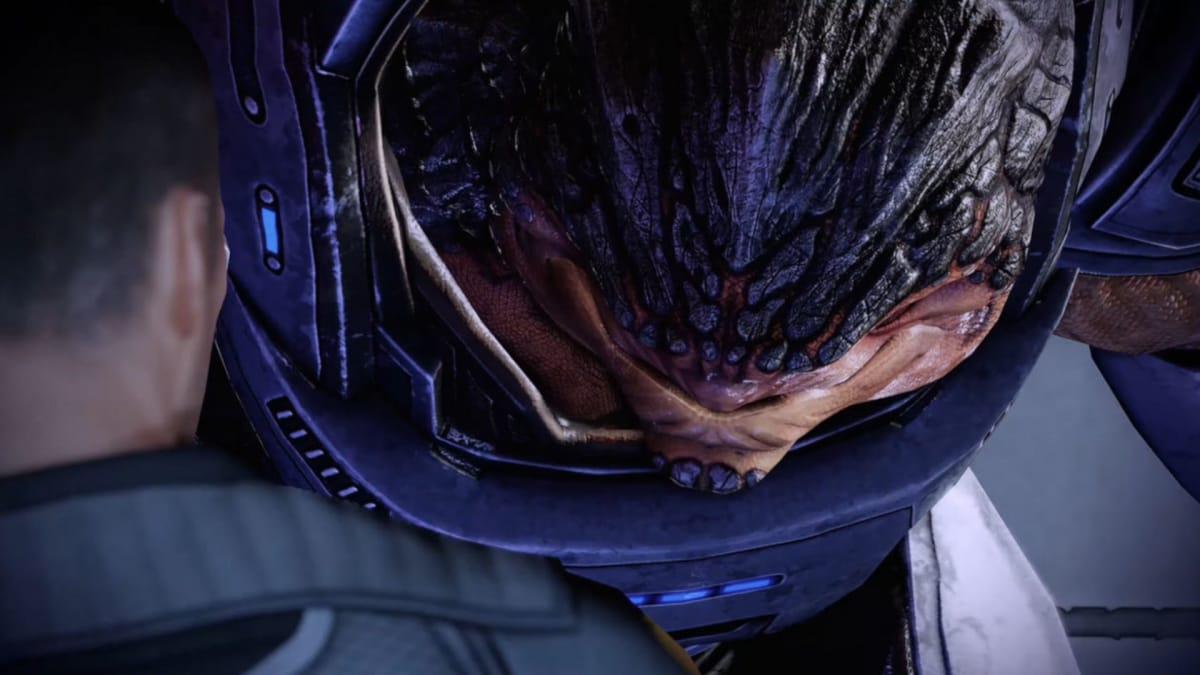
So the question you may be asking is, how does this make any of the aliens actually good? In a vacuum it clearly doesn’t; we have seen humanoid aliens before and even most of the cultural aspects are air-lifted out stock ideas. Yet, the aliens of Mass Effect are well-loved, and I suspect the reason for this, beyond the individual characterizations of the main cast and companions, is how BioWare plays with the expectations of its aliens.
Take Urdnot Wrex. You expect him to be a chaotic brute, a warrior fighting in a galaxy by his own rules and unique code of honor. But despite being a Krogan, Wrex is sympathetic because he recognizes the problems his people face as a species, yet feels nothing can be done. With some encouragement, he becomes the leader he was born to be.
Grunt, the other Krogan you can recruit, is a tank-bred Krogan that is given all of the names and traits of a warrior, but none of the wisdom that follows it. It is like being an aficionado of military tactics but never taking up arms to lead troops before; the experience of what you expect from a warrior culture is different from the outside looking in. Grunt offers the player an aversion to the warrior culture; you walk that path with him during his loyalty mission in Mass Effect 2 and show the more rigid aspects of cultural expectations the door in the process.
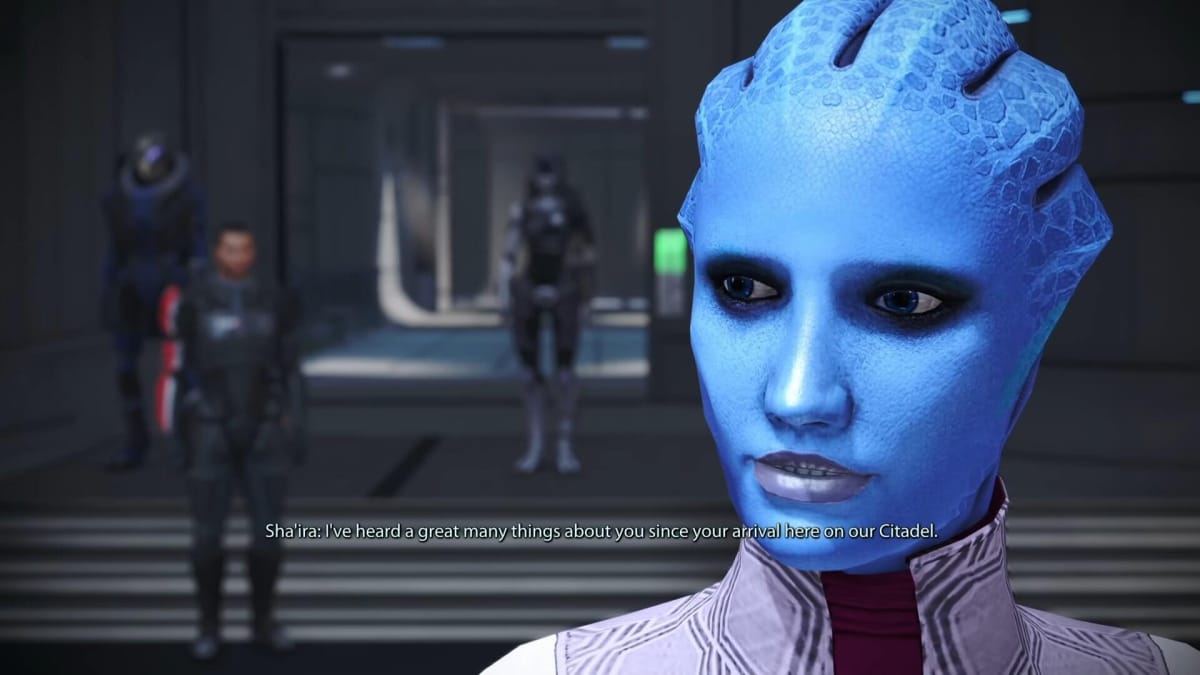
This is what I mean by playing with expectations. Most warrior cultures would simply be the names and honor code blurted out by the likes of Grunt before his loyalty mission, all bark, no bite. It would be the only trait of its characters, both major companions and even minor NPCs. Instead, Mass Effect correctly showcases how the aliens are not culturally monolithic. It avoids the pitfall of “orcs are always evil” by positioning each alien as being individual, with their cultural aspects only being a part of their personality.
These expectations are toyed with in other ways. The Asari were designed to look beautiful to the player and lifted their visual cues and even aspects of their culture from other sources. What makes them unique is how the Asari are positioned in the universe of Mass Effect. The “all-wise, all-powerful” culture makes many assumptions and mistakes that, for most species, take for granted simply because they are Asari. The uplifting of Asari culture is also built on the backs of others, namely the extinct Protheans thanks to hidden artifacts on their homeworld.
The Asari are flawed in their logic and wisdom. We see this sometimes with individual characters, like Mr. Spock and other Vulcans who are told to be logical and dogmatic. However, the entire species is instead cultivated upon the uncertainties and even pride of its own achievements. Asari at first glance is a hodge-podge of tropes, but there is depth and complexity to it that allows the player to actually question the role of the Asari and interact with them in a more individualistic way.
Quarian Quandary
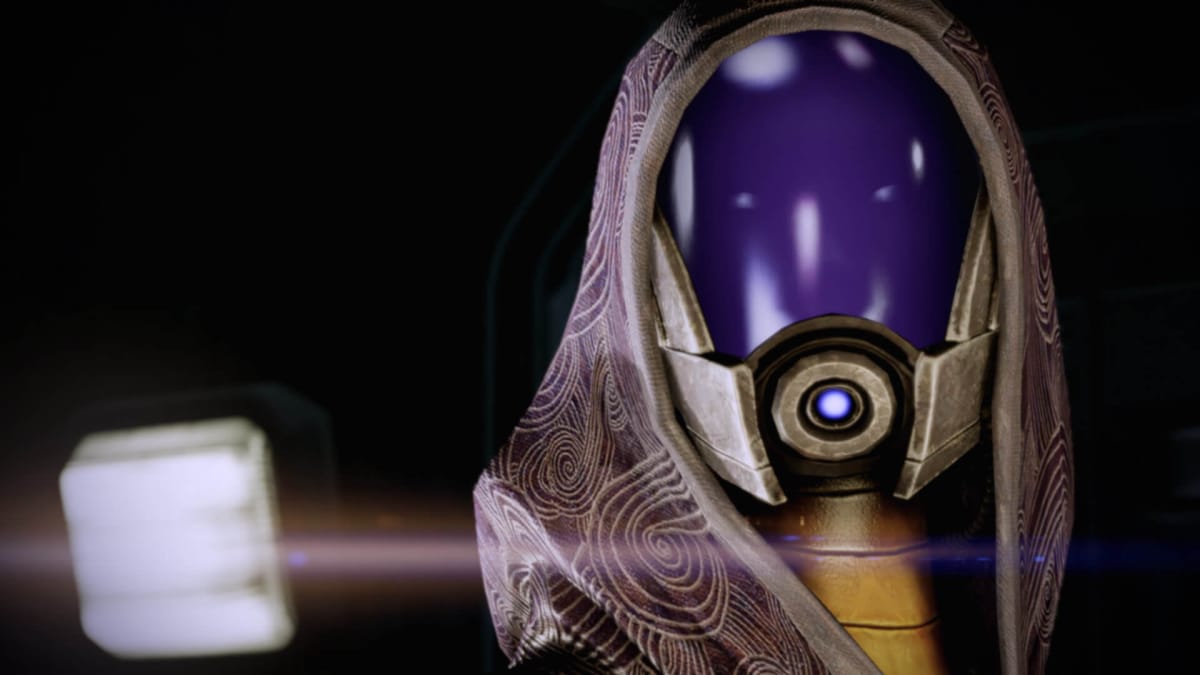
This brings us back to Tali and her photo. Many felt disappointed by the reveal of Tali’s face in 2012, and I no doubt expect mild resentment to the Legendary Edition’s changes as well from some. Yet, refinements of Tali as an alien design were truly never about what’s underneath her suit.
It was the suit itself that made the Quarians mysterious, but aliens who are immunocompromised or faced with toxic conditions to a planet’s atmosphere are nothing new. Suit-based aliens are always an enigma because of what can be underneath their chrome and steel shells. Other aspects of her culture—the passage into adulthood, the life on the flotilla, the fact that most Quarians are tech-savvy and marginalized—are cultural and societal aspects lifted from multiple sources.
What makes Tali, and ultimately, the Quarians, unique is how these elements pitch them in a more negative light than once thought.
The Quarians’ canonically suppressed the emerging Geth intelligence, ultimately dividing their own society by taking martial action against Geth sympathizers. Finally, fleeing and enacting harsh restrictions to keep their society alive, slowly compromising their own bodies in the process into a synthetic shell of their own. It is a progression that is thematically interesting and plays on the expected outcome of “evil machines” that we typically see in sci-fi, from the Borg to the Matrix Computer.
We get instead nuance, conflict, and a species with an identity that is in crisis. The design of the Quarians was always highlighted by the design of their suits; the significance of that becoming a prison of their own making is what elevates the Quarians, and characters like Tali, to becoming a unique race of alien beings.
Building Better Aliens
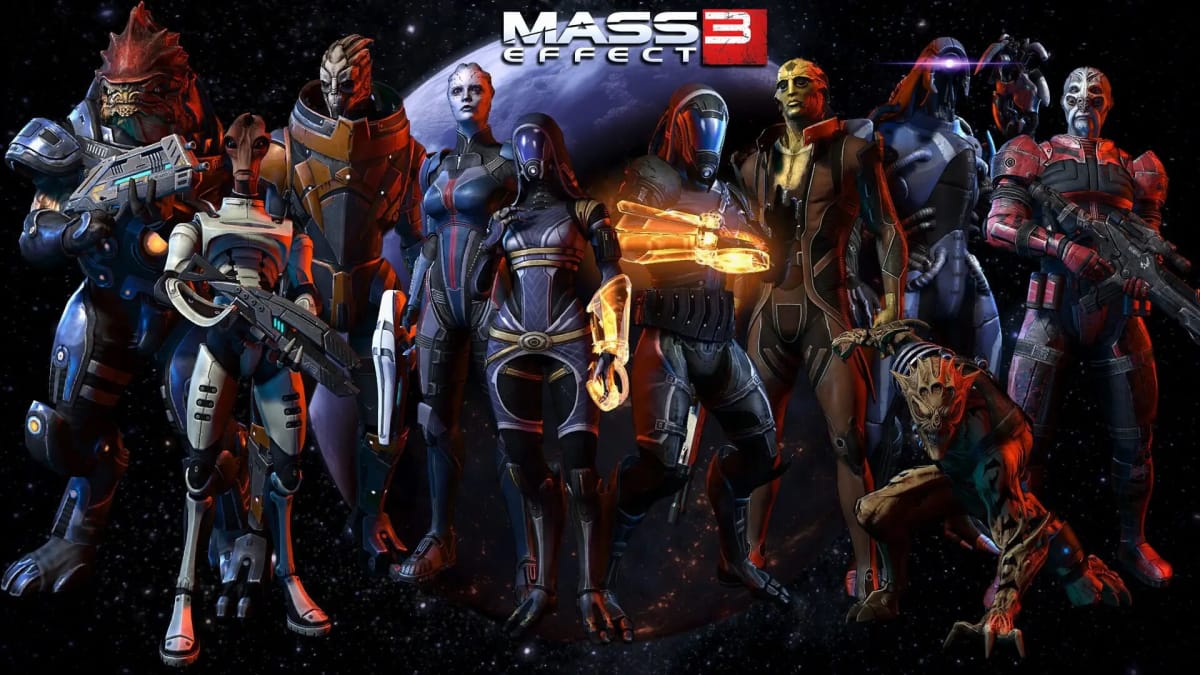
The strong alien design is, ultimately, an art form in itself. Even with the unbound creative process, we see in video games the limitations are often still highlighted. Literature almost always has a leg up when it comes to alien designs, creating truly alien cultures and physiology that is almost unrivaled by visual media.
Still, Mass Effect does a good job of playing with these stereotypes and highlighting aspects of their alien designs to accentuate their reimagining of these tropes. BioWare is successful at limiting the monolithic traits we often see from aliens, while playing with their design aspects to make unique, and now widely recognizable, creatures in popular culture.
Have a tip, or want to point out something we missed? Leave a Comment or e-mail us at tips@techraptor.net
